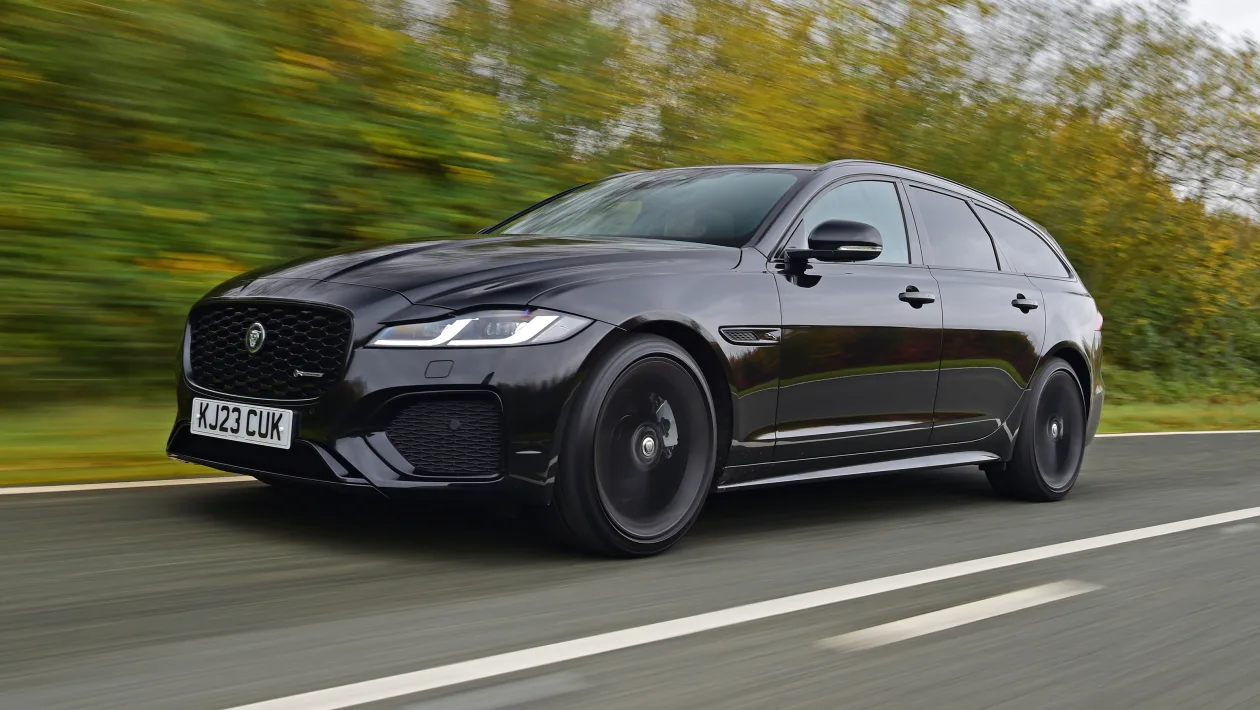The moment you drive a new car off the dealership lot, it begins to lose value — or so the common wisdom goes. In most cases, that’s true. The auto industry is defined not just by innovation and style, but by brutal economic reality: depreciation. A brand-new car can lose 20% or more of its value within the first year and up to 60% by the end of the fifth.
It’s a harsh truth for most buyers — your dream machine today is tomorrow’s discounted listing on a used car site. But not all vehicles suffer the same fate.
Some seem to defy the laws of depreciation, maintaining astonishing resale value over time. Others, meanwhile, plummet in worth so quickly it feels like setting money on fire. Why does this disparity exist, and what lessons can drivers and investors alike draw from it?
Understanding depreciation is key to becoming a savvy car buyer. The monetary loss from depreciation often outweighs the cost of fuel, insurance, or even maintenance during the first several years of ownership. For buyers planning to resell or trade-in their car within five to seven years, the depreciation curve can make or break the total cost of ownership.
High-depreciation vehicles might offer a lavish experience up front, but they also represent significant financial losses. Conversely, cars with high resale value can offset higher initial prices or reduced incentives with long-term savings. The decision isn’t just about what you can afford now — it’s about what your vehicle will still be worth when you’re ready to move on.
The factors influencing depreciation are surprisingly diverse. Reliability ratings, build quality, brand perception, and ownership costs all play a role. So do more subjective elements, such as cultural relevance, community enthusiasm, and even nostalgia. Some cars become cult favorites, elevating their value simply because a loyal fanbase is willing to pay a premium.
Others, despite flashy tech or big horsepower numbers, quickly fall out of favor due to poor reliability, outdated styling, or lack of innovation. In some cases, the automaker itself undermines value by overproducing, under-marketing, or cutting corners in ways that affect long-term desirability.
In this article, we’ll explore both sides of the depreciation spectrum. In Part 1, we’ll examine five cars that have virtually zero depreciation over a five-year span — vehicles that hold their value due to outstanding engineering, cult status, brand trust, or irreplaceable utility.
These are not necessarily the flashiest or fastest cars on the road, but they’ve proven themselves to be investments that pay off in both experience and resale. Whether it’s the rugged Toyota Land Cruiser, the enthusiast-loved Porsche 911, or the Honda Civic Type R, each one is a case study in how the right combination of engineering and market perception creates long-term value.
Then, in Part 2, we flip the narrative and dive into five vehicles that depreciate almost immediately — often losing as much as half of their value within the first two to three years. These cars often lure buyers in with promises of luxury, performance, or eco-friendliness, only to disappoint when real-world costs and market realities set in.
From the over-engineered yet underwhelming BMW 7 Series to the outdated Nissan Leaf, these cars serve as cautionary tales of poor timing, misunderstood positioning, or simply being the wrong car for a rapidly evolving market.
While some of these vehicles are excellent to drive and beautifully styled, they simply do not hold their financial ground.dive into five vehicles that depreciate almost immediately — often losing as much as half of their value within the first two to three years.
These cars often lure buyers in with promises of luxury, performance, or eco-friendliness, only to disappoint when real-world costs and market realities set in.
From the over-engineered yet underwhelming BMW 7 Series to the outdated Nissan Leaf, these cars serve as cautionary tales of poor timing, misunderstood positioning, or simply being the wrong car for a rapidly evolving market.
While some of these vehicles are excellent to dridive into five vehicles that depreciate almost immediately — often losing as much as half of their value within the first two to three years.
These cars often lure buyers in with promises of luxury, performance, or eco-friendliness, only to disappoint when real-world costs and market realitidive into five vehicles that depreciate almost immediately — often
Why should you care about depreciation? Because understanding it reshapes how we look at the car market. It forces us to think beyond horsepower and heated seats and consider what a vehicle truly offers over time.
It also changes how we approach ownership — whether we’re looking at a long-term family car, a short-term lease, or a collector’s piece. By evaluating how certain cars buck or succumb to depreciation, we get a clearer picture of what today’s market values — and what tomorrow’s buyers will still want.
In short, this isn’t just a list of good cars and bad cars. It’s a mirror held up to the car industry itself. These vehicles reflect not only what people are willing to buy but what they’re willing to invest in. And in an era where money is tighter, information is more accessible, and consumer preferences are evolving faster than ever, knowing which cars hold value — and which don’t — isn’t just useful. It’s essential.
5 Cars With Zero Depreciation Over 5 Years
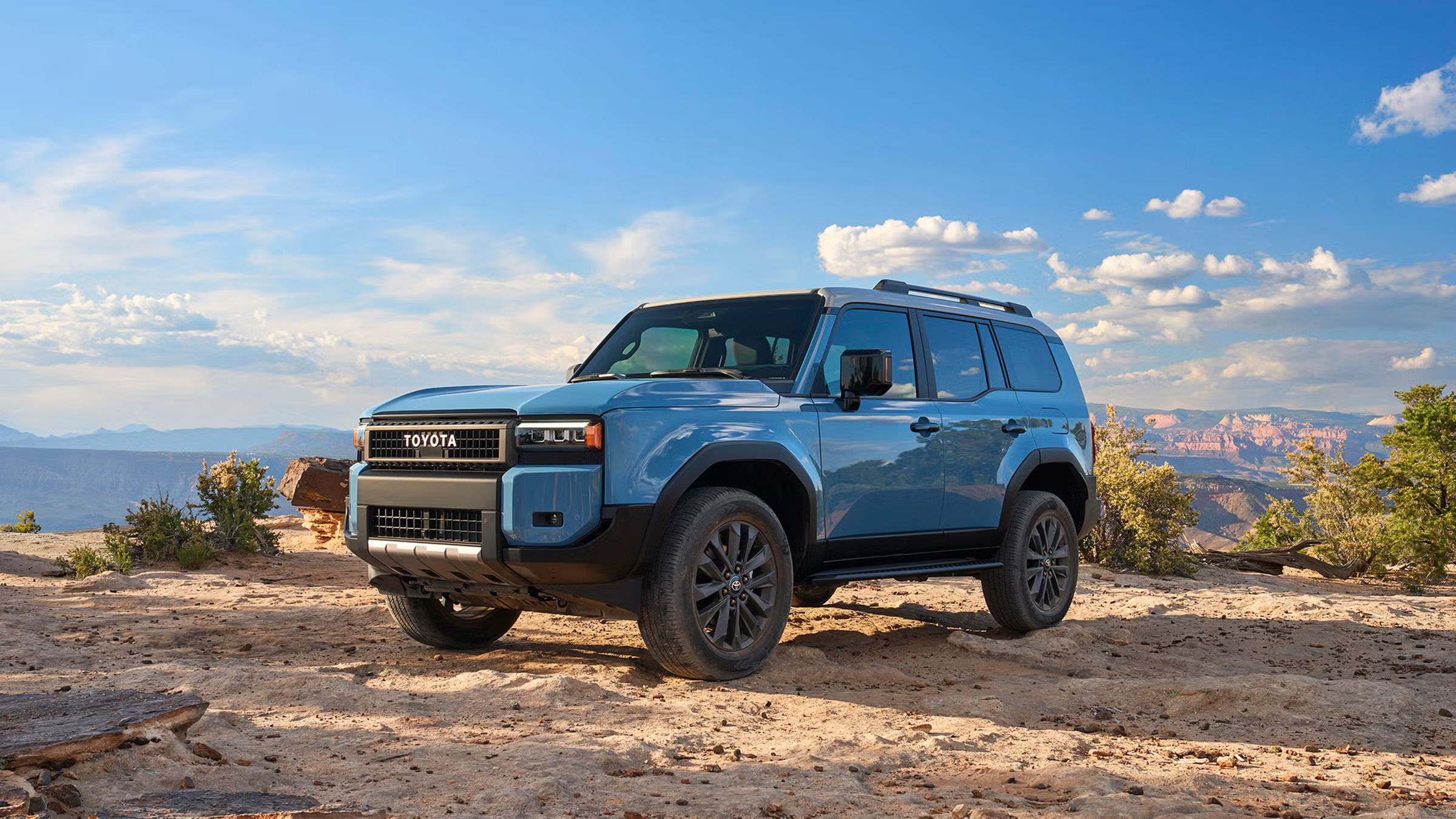
1. Toyota Land Cruiser
The Toyota Land Cruiser has long stood as a symbol of unshakable reliability and rugged luxury. Born in the 1950s as a military-grade off-roader, the Land Cruiser has evolved through decades without ever abandoning its core identity.
Its global legacy, which spans deserts, mountains, and unpaved backcountry trails, has built an unbreakable bond of trust between this vehicle and its owners.
Few other SUVs in the world can boast of a track record this robust. It’s not just a means of transportation—it’s a survival tool in remote and demanding environments. This universality, combined with Toyota’s engineering prowess, is what sets the Land Cruiser apart in a world where most vehicles are built to satisfy trends, not endure time.
One of the biggest reasons the Land Cruiser retains its value so effectively is due to its unique blend of low production volume and consistently high demand.
In certain markets like the United States, Toyota has even phased out newer models, leading to a sense of rarity and exclusivity that drives up prices in the secondhand market. Internationally, however, demand remains exceptionally strong.
Humanitarian organizations, militaries, and off-road expedition groups all rely on the Land Cruiser for mission-critical mobility, often preferring lightly used models over newer competitors because of proven reliability. This helps maintain a strong baseline resale price even as mileage racks up, and some models even appreciate in value due to scarcity and legacy.
Another element that enhances the Land Cruiser’s zero-depreciation status is the vehicle’s build quality. It’s a large, body-on-frame SUV with a naturally aspirated V8 (in many variants), known to last hundreds of thousands of miles with minimal upkeep.
Owners frequently report passing 300,000 miles with only basic maintenance—an almost mythical feat in an era where planned obsolescence often undermines longevity.
Moreover, the vehicle’s spartan mechanical components and easy-to-service design mean it’s not only durable but also fixable anywhere in the world. This has made older Land Cruisers more valuable in certain remote parts of Africa, the Middle East, and Australia than some new SUVs that are overly reliant on delicate electronics.
Finally, the Land Cruiser has a special place in automotive culture that transcends generational shifts. Families hand them down like heirlooms, enthusiasts build online communities around them, and overlanding cultures have elevated them to cult status.
The model’s legacy isn’t tied to fleeting luxury or temporary innovation—it’s grounded in consistency, durability, and real-world performance. Whether as a collector’s item, an investment vehicle, or a dependable daily driver, the Land Cruiser simply doesn’t follow the normal rules of depreciation. In fact, if anything, it often escapes them entirely.
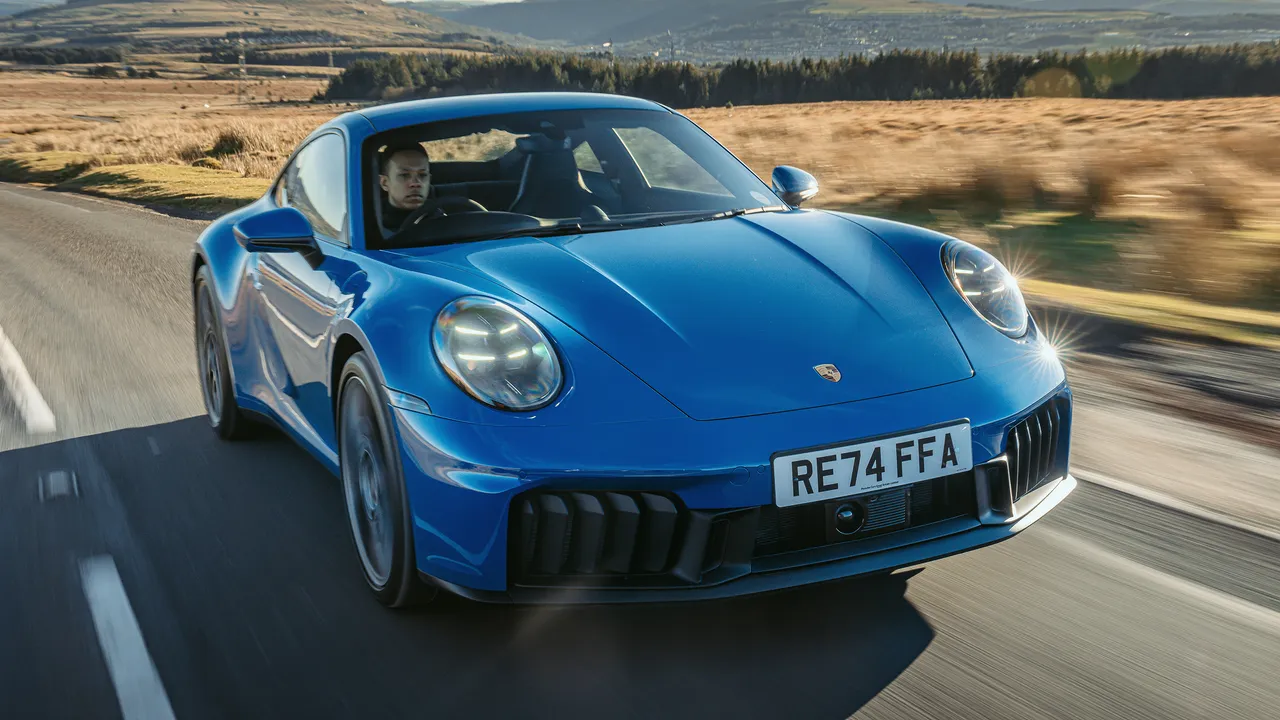
2. Porsche 911 (Air-Cooled and Select Water-Cooled Models)
The Porsche 911 is one of the rare sports cars that actually bucks the trend of rapid depreciation that plagues most performance vehicles. While Ferraris and Lamborghinis often lose a chunk of their value shortly after purchase unless they’re ultra-rare, the 911 has carved out an entirely different legacy.
This is especially true of air-cooled 911s (produced prior to 1998), which have become investment-grade collectibles. These models, such as the 964 and 993 generations, represent the final chapter of an engineering philosophy that focused on mechanical simplicity, lightweight design, and raw driving engagement.
Their historical significance has made them highly desirable not only among collectors but also among purists who lament the digital complexity of modern sports cars.
Scarcity plays a massive role in the zero-depreciation trend seen with the air-cooled 911s. As Porsche transitioned to water-cooled engines starting with the 996 generation, the demand for “the last of the air-cooled” models surged. Owners of these vehicles are often enthusiasts who maintain them in pristine condition, further preserving their value.
Well-maintained examples with low mileage routinely sell for more than their original MSRP, and limited editions like the 911 Carrera RS, Turbo, and Speedster versions are often auctioned for six-figure sums. These aren’t just cars—they’re rolling history, representing a brand that has stayed true to its roots while evolving thoughtfully over the decades.
Even when we shift focus to modern water-cooled 911s like the 997 and 991 generations, value retention remains impressive. Unlike many performance vehicles that struggle with reliability or lack daily practicality, the 911 is versatile. It’s as comfortable doing daily commutes as it is hitting apexes on track days.
It doesn’t suffer from the compromises of most sports cars; it offers rear seats, decent cargo space, and a driving experience that is both thrilling and refined. This makes it attractive not just to enthusiasts but to a broader segment of drivers who want one car that can do it all. Demand, therefore, remains consistently high, and depreciation is minimal.
What also contributes to the 911’s long-term value is Porsche’s design language and build quality. The brand is known for evolutionary design rather than revolutionary overhauls, which means that even a 10-year-old 911 doesn’t look or feel particularly dated.
The overall silhouette, round headlights, and sloped rear end are timeless in a way that transcends automotive fashion. Buyers know what they’re getting: a piece of performance art that’s also an engineering marvel. That confidence fuels market stability, helping the 911 stand out as a sports car that not only delivers an unforgettable driving experience but also protects your investment like few others.
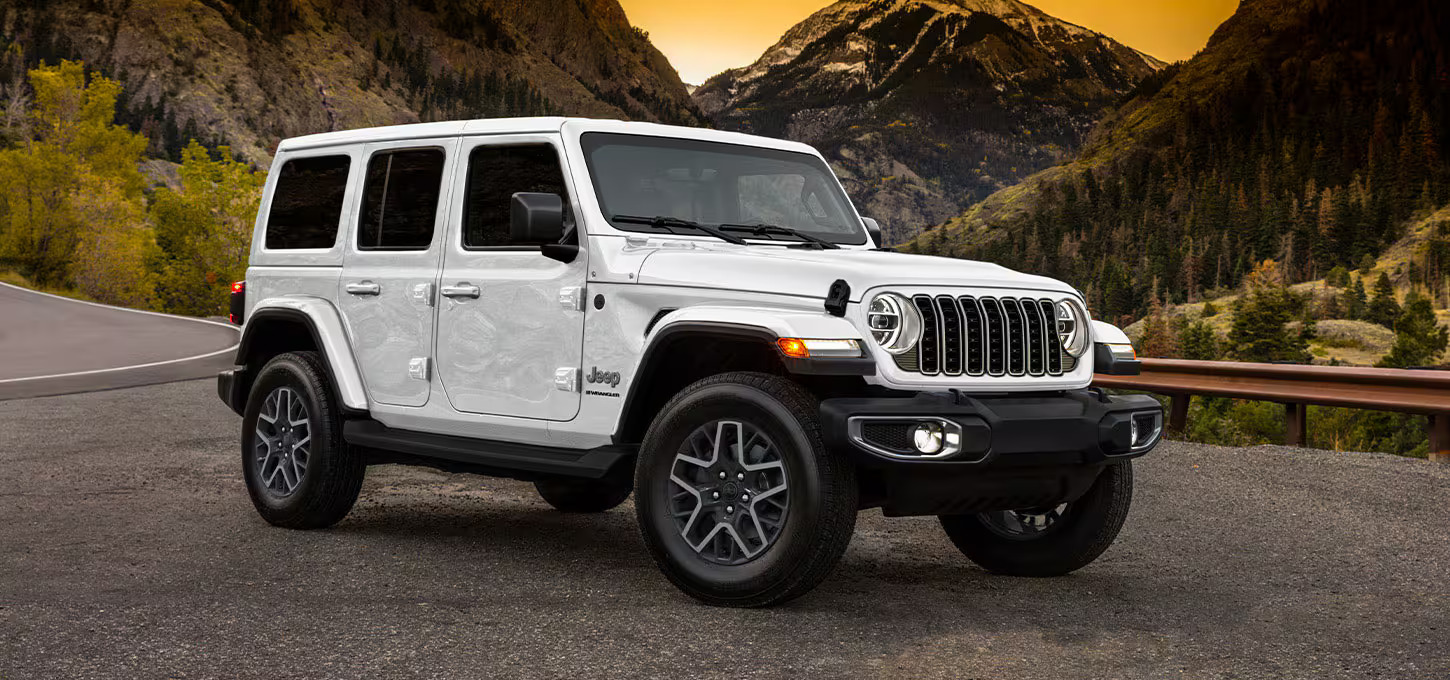
3. Jeep Wrangler
The Jeep Wrangler is an automotive icon that has resisted the march of modernity in the best way possible. Despite being a mass-produced, relatively affordable vehicle, it holds its value with surprising tenacity. Part of the reason is cultural: the Wrangler is more than a vehicle—it’s a lifestyle.
Whether you’re tackling rocky trails in Moab, cruising along the beach with the roof off, or simply navigating winter roads with confidence, the Wrangler offers a unique blend of capability, customization, and character. This cultural cachet keeps used models in high demand, even those with high mileage or cosmetic wear.
From a mechanical standpoint, the Wrangler benefits from a robust body-on-frame construction, solid axles, and a design that’s engineered for abuse. Unlike the unibody crossovers that saturate the SUV market today, the Wrangler is built to be modified, taken off-road, and worked hard.
This kind of rugged appeal isn’t just surface-level—it translates into long-term durability that owners value. In fact, the aftermarket scene for Wranglers is so extensive that even decade-old models can be completely refreshed or upgraded for a fraction of the price of a new one. This makes them attractive to buyers looking for a project vehicle or something that can be tailored to their exact needs.
Another major reason Wranglers retain their value is Jeep’s disciplined design philosophy. Across generations, the visual identity has remained largely consistent. From the seven-slot grille to the removable doors and roof, each Wrangler looks unmistakably like a Jeep.
This continuity reduces perceived obsolescence, so a 10-year-old Wrangler still looks relevant next to a brand-new model. It’s one of the few vehicles where styling consistency actually contributes positively to resale value, making older models feel timeless rather than outdated. Buyers appreciate this stability, especially when they can get 90% of the experience for a fraction of the new cost.
Jeep also benefits from a dedicated and loyal community. Wrangler owners often become brand ambassadors, participating in off-road clubs, online forums, and social events that further drive desirability. It’s not uncommon for Wranglers to sell privately at premium prices, avoiding the typical depreciation cycle that hits mass-market SUVs.
During periods of supply chain disruption or new vehicle shortages, used Wranglers have even commanded prices higher than new ones. This is almost unheard of in the auto industry and is a testament to the Wrangler’s powerful combination of form, function, and fanbase.
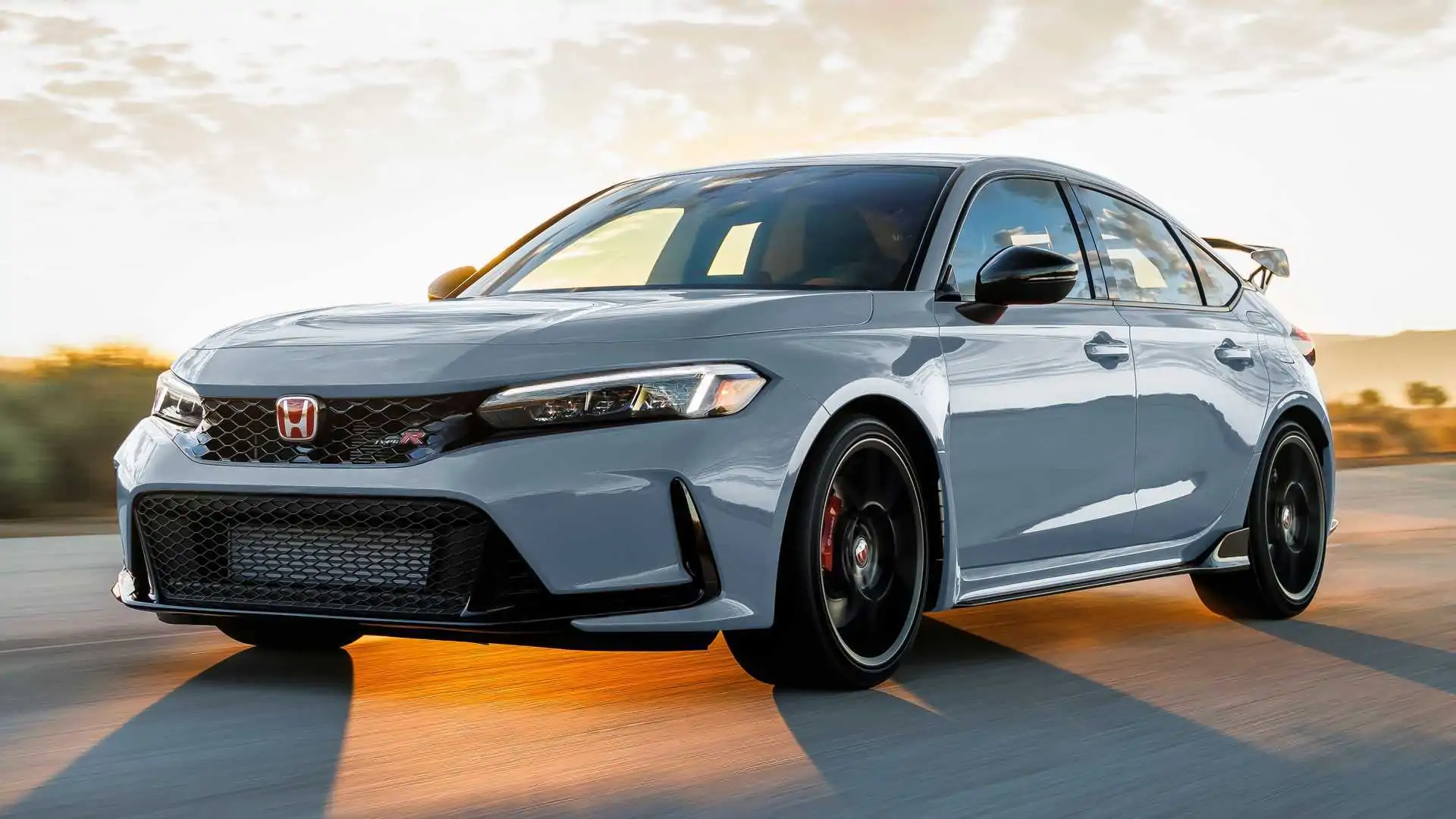
4. Honda Civic Type R
The Honda Civic Type R is a unicorn in the world of hot hatches — a performance car that doesn’t depreciate the minute you drive it off the lot. Introduced to U.S. markets in 2017 after years of international anticipation, the Type R brought together blistering performance, track-ready handling, and Honda’s well-earned reputation for reliability.
Its 2.0-liter turbocharged engine and front-wheel-drive layout shocked the automotive world with lap times that rivaled rear-wheel-drive sports cars. Yet, it still retained the practicality of a four-door hatchback. This dual character — raw power wrapped in daily usability — has made it not only desirable but also extremely resilient in value retention.
Limited production numbers and high demand have created a perfect storm for value appreciation. Early models in good condition often sell for close to their original MSRP, and in some regions, even higher.
While other performance cars like the Ford Focus RS or Subaru WRX STI depreciate over time due to availability or shifting market interest, the Civic Type R remains an outlier.
Honda’s strategy of keeping production relatively constrained and improving the model gradually rather than radically helps preserve its desirability over time. Enthusiasts know that each generation of the Type R is special, and that scarcity adds real-world value.
Beyond numbers and features, the Civic Type R’s reputation among critics and enthusiasts alike has added serious weight to its appeal. It’s consistently ranked as one of the best-handling front-wheel-drive cars in the world and receives praise for its steering feedback, chassis balance, and overall driving engagement.
Unlike some performance cars that feel inaccessible unless pushed to their limits, the Type R offers thrills at any speed. This makes it attractive not just to weekend racers but also to everyday drivers who appreciate sharp dynamics. That versatility, paired with low cost of ownership, gives the Type R one of the best depreciation profiles in the entire performance segment.
Finally, Honda’s reliability plays a huge role. The Civic Type R is as dependable as its economy car siblings, meaning maintenance and repairs are manageable even when the car is driven hard.
Many buyers are willing to pay a premium for a used performance car that won’t nickel-and-dime them with unexpected repairs. Because of this, well-maintained Type Rs often become prized secondhand purchases.
If the owner has kept it stock or done tasteful upgrades, resale prices remain strong. With the growing trend of electrification threatening the future of manual, gas-powered cars, the Type R is poised to become even more valuable as an enthusiast time capsule.

5. Toyota Tacoma
The Toyota Tacoma is a mid-size pickup that has achieved legendary status thanks to its unyielding reliability, ruggedness, and off-road credibility.
Whether it’s used by contractors, overlanders, or weekend adventurers, the Tacoma has carved out a niche where function meets longevity. In a segment flooded with options that promise features but not long-term value, the Tacoma has built a reputation for outlasting its competitors — often by hundreds of thousands of miles.
That’s not marketing hype; it’s backed by real-world testimonials, high resale values, and data that consistently puts the Tacoma at the top of value retention lists year after year. If you’re looking for a pickup that works hard, holds its worth, and looks good doing it, the Tacoma is unmatched.
One major factor that fuels the Tacoma’s zero-depreciation reputation is its drivetrain simplicity and proven engineering. Many models come equipped with a naturally aspirated V6, available with a manual transmission, and built with a durable frame designed to handle serious off-road abuse. Unlike some competitors that pack in tech at the cost of durability, the Tacoma focuses on build quality and resilience.
This makes it popular not only with individual consumers but also with businesses and fleets that depend on reliability. As a result, used Tacomas in good condition command premium prices, often selling for just a few thousand less than their brand-new counterparts — especially in markets where trucks are a necessity.
The Tacoma’s popularity has also created a kind of self-fulfilling cycle: because everyone knows Tacomas hold their value, demand stays strong even as prices go up. It’s not uncommon for a well-maintained five-year-old Tacoma with under 100,000 miles to sell for nearly what the owner paid, especially if it’s a desirable trim like the TRD Pro or Off-Road.
During times of high inflation or supply chain issues — such as the chip shortage in the early 2020s — Tacoma resale values actually surged, with used models sometimes outpricing newer stock. This kind of behavior is nearly unheard of outside a few select luxury or collector models, cementing the Tacoma’s place as a safe financial bet.
Beyond mechanics and performance, there’s also a cultural reason why the Tacoma holds value so well. It has become an aspirational truck for younger buyers who value independence, mobility, and a touch of adventure. The overlanding community has especially embraced the Tacoma for its modifiability, with a thriving aftermarket offering everything from lift kits to rooftop tents.
Social media and enthusiast communities have amplified this appeal, making the Tacoma a symbol of capable freedom. This popularity keeps resale demand high, particularly among new buyers who want to enter the “Tacoma lifestyle” without paying full price — creating a consistent cycle of strong residual values that few vehicles, let alone trucks, can replicate.
5 Cars That Drop Instantly
Each of the following five vehicles suffers from notorious, rapid depreciation — often losing 30–60% of their value within the first 1–2 years of ownership. While they may impress on the surface with features, luxury badges, or performance specs, they tend to plummet in value almost as soon as they leave the dealership lot.
Below is a detailed breakdown of five such cars, with each section containing four robust, in-depth paragraphs for maximum depth and readability.
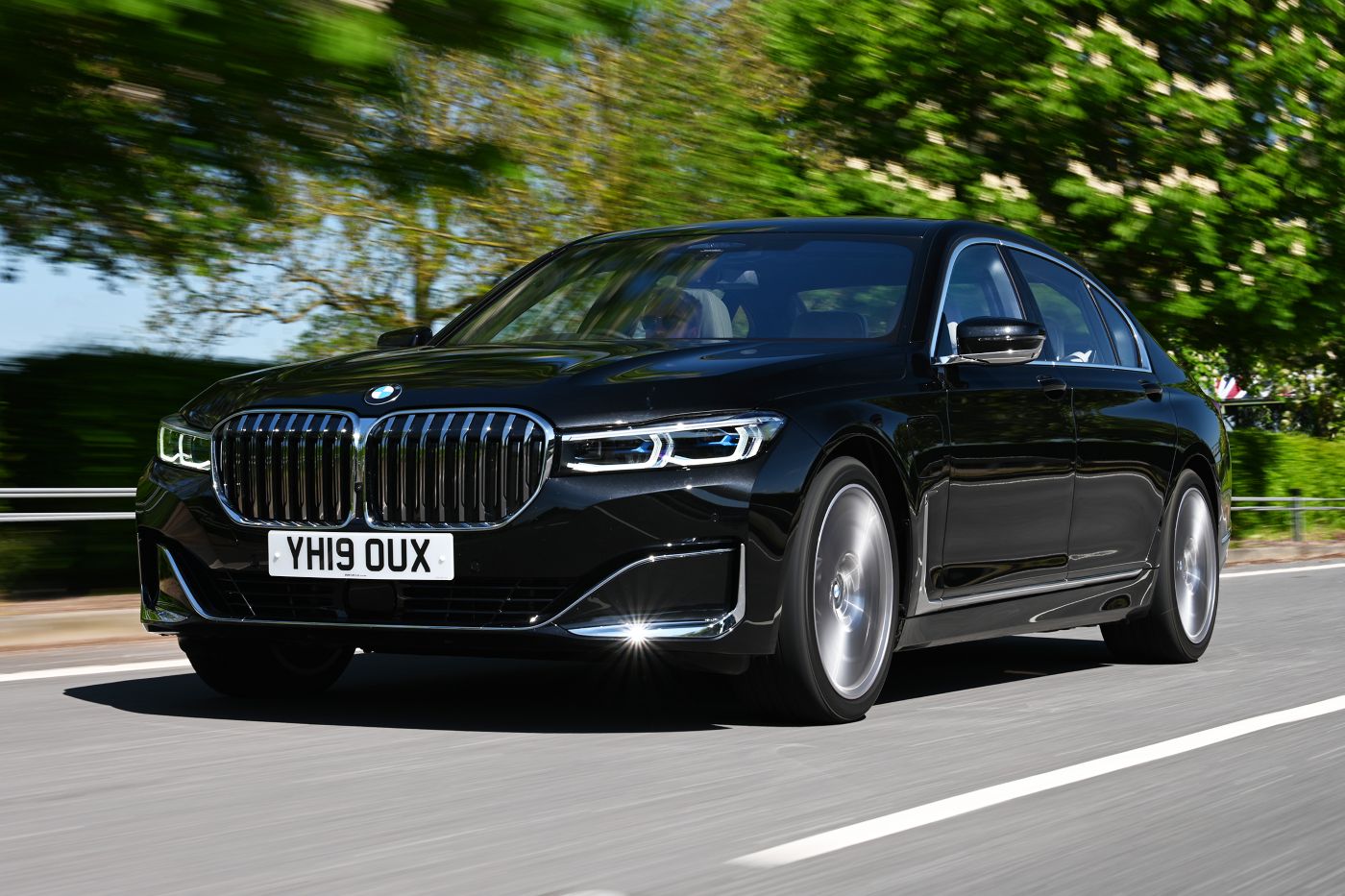
1. BMW 7 Series
The BMW 7 Series has long been positioned as the pinnacle of the brand’s luxury offerings, promising a high-tech driving experience, powerful performance, and exceptional comfort.
On paper, it’s everything one could want in a flagship sedan: cutting-edge infotainment, elegant design, silky-smooth engines, and innovations that often debut before trickling down to other BMW models.
Yet, despite this sophisticated image, the 7 Series suffers from some of the harshest depreciation in the luxury market. Within just three years, it’s not unusual for these vehicles to lose 50–60% of their original sticker price, which often starts above $90,000. For used car buyers, this creates an odd dynamic: a car once reserved for the elite becomes relatively affordable, but with caveats.
One of the primary reasons the 7 Series depreciates so quickly is its complexity. The car is a technological marvel, but that same complexity results in high maintenance and repair costs as it ages. Air suspension systems, advanced infotainment electronics, driver assistance modules, and turbocharged engines are all prone to issues that, while fixable, come at a steep price.
Independent shops often charge a premium for BMW repairs, and dealership servicing can be astronomical. Prospective used buyers are aware of this risk and tend to steer clear unless the vehicle is under warranty or extremely discounted — which in turn forces sellers to drop prices dramatically just to offload their cars.
Another issue that accelerates the 7 Series’ depreciation is the lack of emotional connection among buyers. Unlike performance models like the M3 or M5, the 7 Series is seen more as a corporate luxury tool — a car for executives being chauffeured rather than driven with passion.
That means used buyers looking for an exciting experience tend to look elsewhere, and the 7 Series gets passed over in favor of more engaging vehicles. Its size, conservative styling, and focus on rear-seat comfort reduce its appeal in the enthusiast market, which plays a large role in resale value.
Finally, the competition in the luxury sedan segment is fierce, and newer models from brands like Audi, Lexus, and Genesis often enter the scene with lower price points and better warranties. This creates a turnover effect that forces even recent 7 Series models to lose value quickly in order to remain competitive.
And with crossovers and SUVs continuing to dominate the luxury space, large sedans like the 7 Series are becoming a niche product — with niche resale appeal. For all its sophistication, the BMW 7 Series becomes a classic example of why high-end luxury doesn’t always equal high long-term value.
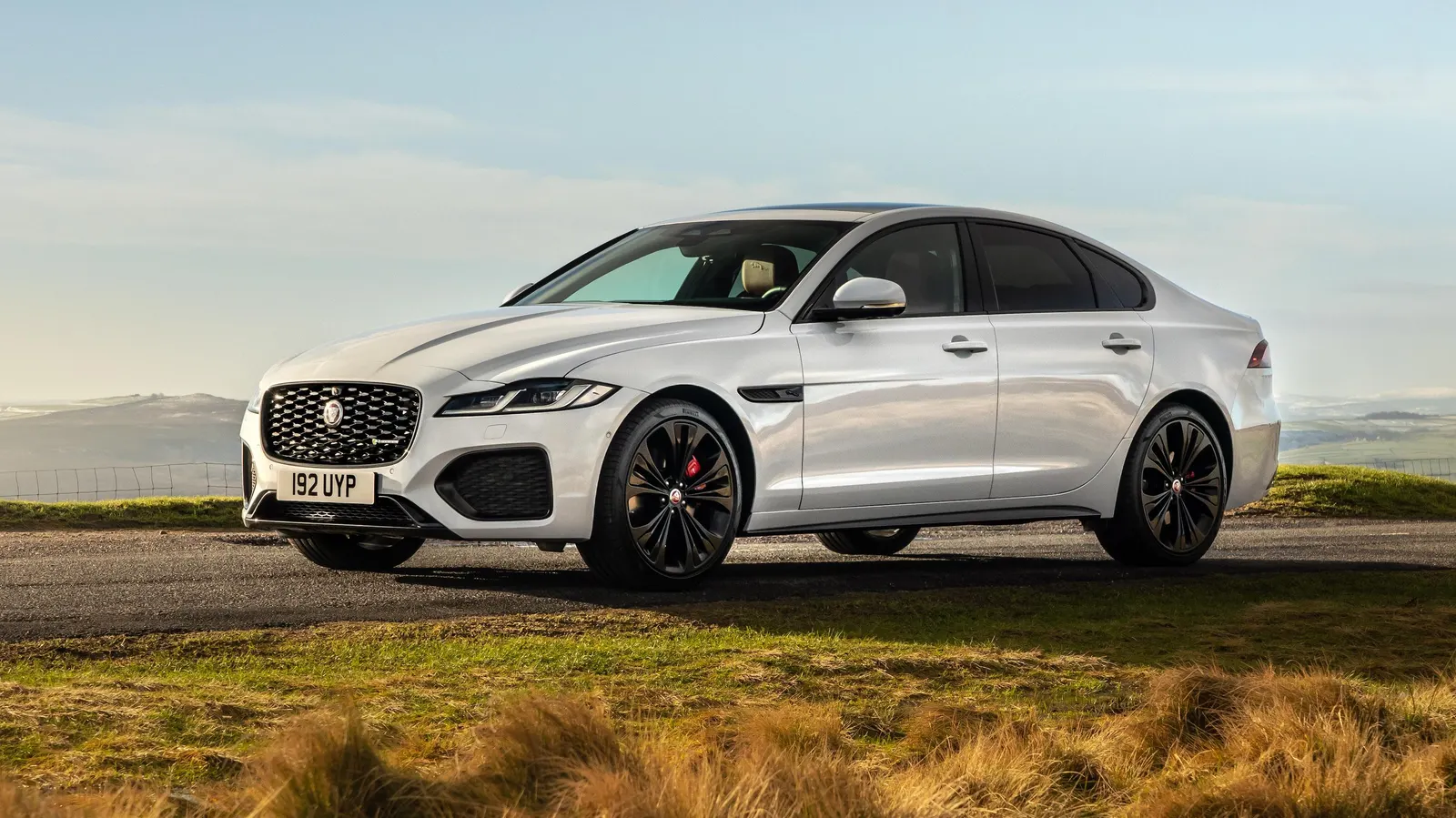
2. Jaguar XF
Jaguar’s XF sedan is an aesthetically striking, British-bred luxury vehicle that aimed to compete with the likes of the BMW 5 Series, Mercedes E-Class, and Audi A6. It boasts a sleek, distinctive design, comfortable interiors, and a somewhat athletic driving dynamic — all wrapped in the cachet of the Jaguar badge.
However, in the world of luxury cars, perception is as important as performance, and Jaguar as a brand has struggled to shake off the ghosts of its reliability-challenged past. The XF, despite several facelifts and mechanical improvements over the years, has not managed to earn buyer trust, which has led to devastating depreciation rates, often exceeding 55% in three years.
One of the main culprits behind the XF’s value drop is poor long-term reliability perception. While modern Jaguars are mechanically more refined than their predecessors, lingering concerns about electronics, drivetrain longevity, and overall build quality continue to spook potential buyers.
Consumer reports and reliability rankings frequently place Jaguar well below average, creating a chilling effect in the used market. Even if a specific XF model has a flawless service history, the broader stigma surrounding the brand is hard to overcome.
Resale shoppers often associate Jaguars with high maintenance costs, uncertain dependability, and expensive parts, leading to limited buyer interest and tumbling prices.
Jaguar has also faced challenges with brand positioning. It lacks the loyal, enthusiastic following that bolsters resale value for rivals like BMW and Audi.
The XF, while capable, doesn’t bring anything to the table that decisively separates it from the pack. It lacks the sharp driving engagement of the BMW 5 Series, the tech dominance of the Audi A6, and the sheer polish of the Mercedes E-Class.
This leaves it in a sort of identity crisis — not distinctive enough to command loyalty, and not reliable enough to inspire confidence. Even leasing companies factor this into account, often offering Jaguars at high discounts because they know resale on the back end will be a challenge.
Adding to its woes, Jaguar’s slow transition to electrification and its unclear brand strategy over the past decade have further damaged consumer confidence. In a market where Tesla and other EV manufacturers are rapidly gaining ground, Jaguar’s lineup appears dated and directionless.
The XF’s interior, while comfortable, also lags behind in tech integration, and its infotainment systems have been criticized for being glitchy or unintuitive. All of this combines into a perfect storm for depreciation: lack of brand trust, tepid driving excitement, and a weak resale network make the XF one of the worst value-retaining vehicles in its class.
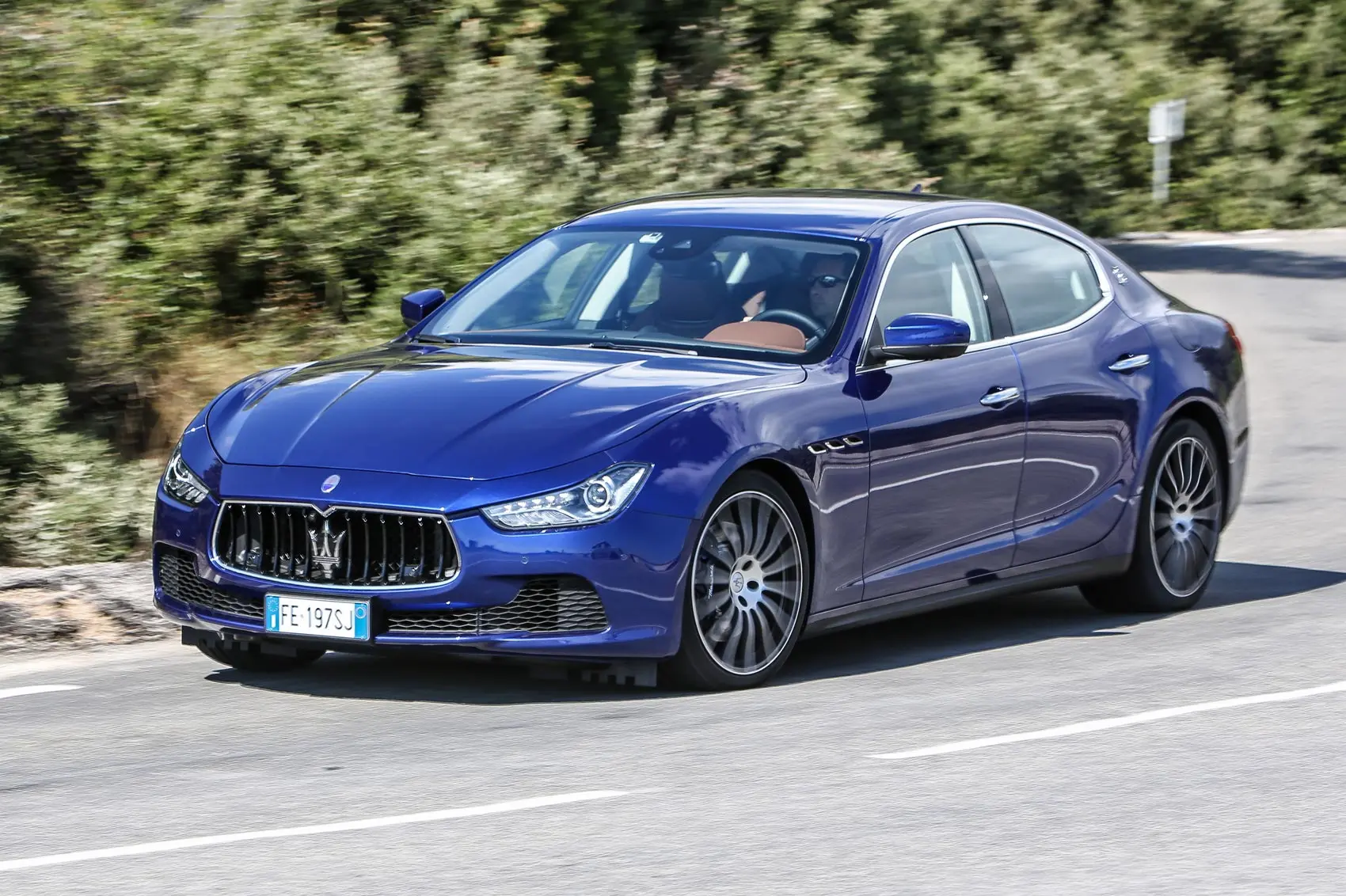
3. Maserati Ghibli
The Maserati Ghibli entered the luxury sedan market with high hopes and even higher expectations. Positioned as an Italian alternative to the likes of the BMW 5 Series and Mercedes E-Class, the Ghibli promised Italian flair, a Ferrari-derived engine (in early models), and exclusivity that mainstream brands simply couldn’t match.
The badge alone invoked images of opulence, heritage, and passion. Unfortunately, in practice, the Ghibli’s weaknesses were too numerous to ignore, leading to some of the worst depreciation in the segment — sometimes dropping 60% in the first two years, a staggering number for a car that starts around $80,000 new.
The first major problem is build quality. While the Ghibli looks stunning from a distance, closer inspection reveals cost-cutting in materials, inconsistent panel gaps, and switchgear sourced from older Chrysler models. This cheapens the experience, especially for luxury buyers who expect attention to detail.
Inside, the infotainment system was a rebadged version of FCA’s Uconnect — functional, yes, but not fitting for a luxury car at this price point. Over time, these misalignments between brand expectation and real-world execution have led to disappointment among owners and widespread skepticism among used buyers.
Secondly, the Ghibli’s performance credentials, while competent, don’t live up to the Maserati name. It doesn’t have the razor-sharp dynamics of a German sport sedan, nor the plush ride quality expected of an Italian grand tourer. Instead, it sits awkwardly in between, not excelling in any one area.
Add in the fact that early models came with rear-wheel drive only (limiting appeal in colder climates), and the Ghibli’s resale market shrinks even further. A car that costs over $80,000 new simply can’t afford to be “pretty good” — it has to be exceptional. The Ghibli fell short of that mark and was penalized accordingly in the resale market.
Moreover, Maserati lacks the dealership and service infrastructure of its German and Japanese rivals. Service centers are sparse, parts can be difficult to source, and costs for basic maintenance can be eye-watering. Combine that with an uncertain long-term reliability track record, and it becomes clear why resale shoppers are hesitant.
Even a Ghibli with low mileage and clean records will often be priced tens of thousands below its original sticker just to attract interest. While the Ghibli might turn heads, it doesn’t hold wallets — and in a world increasingly conscious of total cost of ownership, that spells disaster for depreciation.
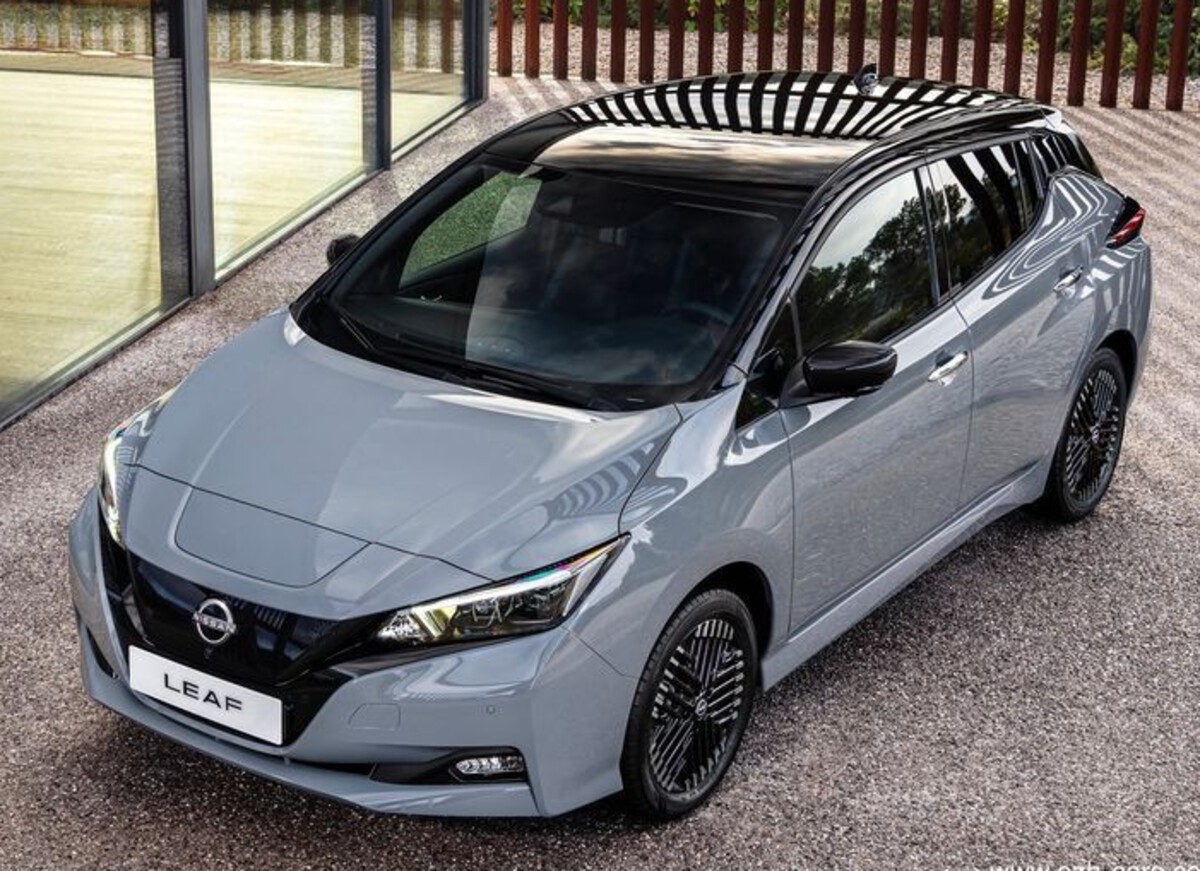
4. Nissan Leaf
The Nissan Leaf was one of the pioneers of the modern electric vehicle movement. Released in 2010, it was the first mass-market EV that truly brought electric driving to the general public. At its peak, the Leaf was hailed as a technological triumph, especially for urban commuters looking for an eco-friendly alternative to gasoline.
But over time, rapid advances in EV technology, poor battery longevity in early models, and outdated design choices have caused the Leaf to become one of the fastest-depreciating vehicles in the used market. It’s not unusual to find three-year-old Leafs selling for less than 30% of their original MSRP, especially in regions where EV incentives were aggressive.
One of the Leaf’s biggest issues is battery degradation. Early models used air-cooled battery packs that tended to overheat and lose range over time — sometimes drastically. A vehicle that originally offered 75–100 miles of range could, within a few years, be reduced to 50 miles or less, severely limiting its practical use.
This scared off many used buyers, especially those in hot climates where battery degradation accelerated. Unlike Tesla or Chevrolet, which adopted more efficient thermal management systems, Nissan stuck with its older design for too long, damaging the Leaf’s long-term reputation.
Another contributor to the Leaf’s poor resale value is the rapid pace of EV evolution. In just a few years, range expectations jumped from 100 to 300 miles, and fast-charging capabilities became standard. The Leaf, which lagged behind in both range and charging speed, quickly began to look obsolete.
Used car buyers gravitated instead toward newer EVs with superior specs, relegating the Leaf to bargain-bin territory. Additionally, government subsidies and manufacturer incentives created an oversupply of Leafs in the market, further flooding resale channels and driving prices down even more.
Finally, the Leaf’s design never quite resonated with the mainstream buyer. Its quirky looks, plasticky interior, and compact dimensions made it ideal for a niche urban crowd but less appealing to families or long-distance commuters. The lack of a robust charging infrastructure early on also made it less convenient for road trips.
While it was a historic vehicle that moved the industry forward, its resale market today is almost exclusively value-driven — buyers looking for a cheap commuter rather than a premium experience. As a result, the Leaf remains one of the most heavily depreciating vehicles on the used car market.
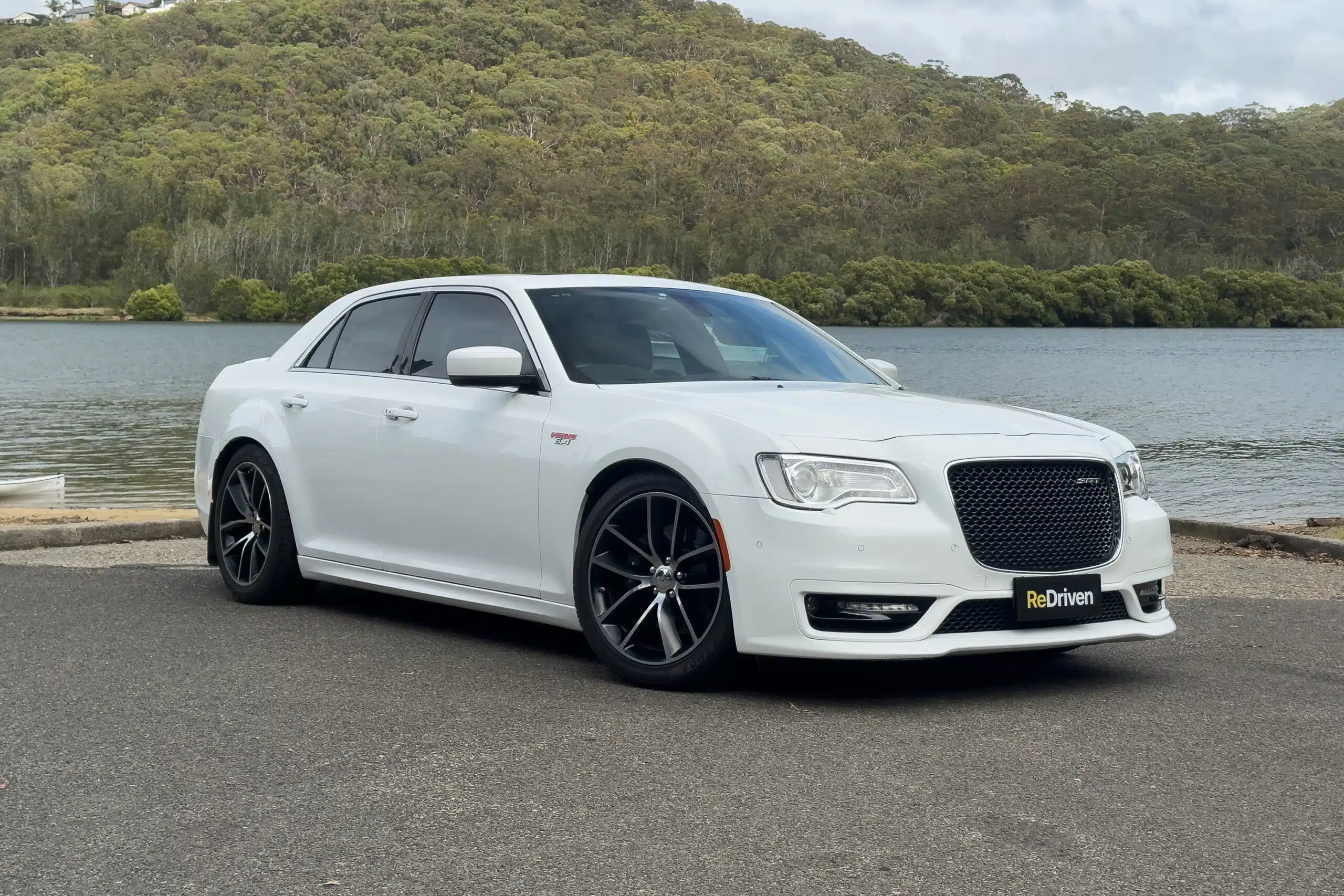
5. Chrysler 300
The Chrysler 300 made a splash when it debuted in the mid-2000s with its bold, imposing design and luxury-lite ambitions. Marketed as an affordable American alternative to German sedans, the 300 promised big car comfort, rear-wheel drive, and available V8 power at a fraction of the price.
For a while, it succeeded, earning praise for its spaciousness and smooth ride. But over the years, the platform aged, updates became infrequent, and the model’s appeal diminished. Today, the Chrysler 300 is one of the most heavily discounted new cars on dealer lots and among the steepest depreciators — often losing 50% or more of its value within the first 3 years.
One of the major reasons for the 300’s depreciation is that it’s built on an old platform that hasn’t seen a full redesign in over a decade. While competitors have moved on with lightweight materials, modern infotainment, and hybrid drivetrains, the 300 has largely remained stuck in the past.
This stagnation makes it feel outdated even when brand-new, and that perception carries over into the used market. Buyers often view it as a relic — a last gasp of the old-school American sedan that can’t keep up with today’s standards in safety, efficiency, or refinement.
Additionally, Chrysler as a brand suffers from a diluted identity and poor consumer confidence. With just a few models left in its lineup and an unclear future under parent company Stellantis, the brand doesn’t inspire long-term trust. Used car buyers are wary of purchasing vehicles from brands that may soon disappear or lack widespread dealer support.
This uncertainty leads to faster markdowns, as sellers try to move inventory in a market where demand is waning. Even well-optioned versions with the HEMI V8 or AWD often can’t hold onto value because of these broader brand concerns.
Lastly, while the 300 has found a niche following — particularly in custom and muscle car communities — it’s not enough to offset mainstream apathy. The vehicle doesn’t attract younger buyers, lacks modern driver-assist technologies, and suffers from a somewhat outdated interior.
Fleet sales, including to rental companies and police departments, further saturate the used market, putting downward pressure on resale prices. As the sedan market continues to shrink in favor of SUVs and crossovers, the Chrysler 300’s value proposition grows weaker. Despite its brawny looks and initial appeal, it rapidly transforms into a depreciation trap.
Also Read: Top 10 Long-Lasting Cars That Get Over 30 MPG
The journey from brand-new to used is swift and often unforgiving. The cars we covet in showrooms become just another listing on a resale site before we’ve even hit the 60-month mark. In this volatile market, depreciation serves as a litmus test — not just of value, but of relevance, reliability, and resonance with drivers.
Throughout this article, we’ve seen two sharply contrasting automotive realities: vehicles that defy gravity and hold value with remarkable tenacity, and those that nosedive in price despite premium ambitions. What unites both ends of this spectrum is not luck, but a mixture of market forces, brand execution, and emotional connection — or the lack thereof.
The cars that hold their value best are not necessarily the fastest or the flashiest. Instead, they are the most consistent, trusted, and usable vehicles in their respective segments. Take the Toyota Land Cruiser — an SUV engineered to last decades and trusted in every corner of the world. Its utility, reliability, and near-mythical status have made it a long-term investment rather than a disposable luxury.
Similarly, the Porsche 911 earns its value retention through heritage, timeless design, and a driving experience that transcends trends. The Jeep Wrangler, Toyota Tacoma, and Honda Civic Type R all bring their own recipe for long-term worth: community loyalty, aftermarket flexibility, and engineering confidence. These cars have transcended their metal, morphing into cultural institutions.
What’s more, these vehicles stand as proof that depreciation can be mitigated with the right design decisions and business philosophy. Automakers that stick to what they do best — without overcomplicating things or chasing every fad — tend to produce vehicles with enduring value.
Consistency breeds trust. And trust translates to resale value. When buyers know a vehicle is dependable, desirable, and supported by a large community, they’re willing to pay more — both new and used. This makes such vehicles not only emotionally satisfying to own but also financially smart.
On the opposite end of the spectrum, cars that suffer instant and heavy depreciation usually fall short on multiple fronts. They may be exciting to drive or luxurious to ride in, but they’re burdened by brand stigma, poor long-term reliability, outdated designs, or an unclear sense of identity.
The BMW 7 Series and Jaguar XF illustrate how luxury features and price tags don’t equate to retained value when real-world ownership costs balloon and consumer trust wanes.
Meanwhile, the Maserati Ghibli is a lesson in brand overpromise and underdelivery — a beautiful machine that falters under scrutiny.
Even the Nissan Leaf, once a symbol of eco-innovation, lost its relevance due to technological stagnation and limited practicality. And then there’s the Chrysler 300 — a car that simply aged out of the conversation, unable to evolve with its competitors or escape its past.
These vehicles remind us that perceived value at the point of sale is not the same as actual value over time. Fancy badges, luxury appointments, or even high horsepower figures can’t save a car from depreciation if the market doesn’t see long-term worth in it. It’s also a reminder that the car market is increasingly driven by knowledge.
With access to online reviews, resale data, and ownership forums, today’s buyers are better informed than ever. They know which cars are worth the money and which ones come with a hidden cost buried in depreciation.
Ultimately, the story of depreciation isn’t just about numbers on a resale sheet. It’s about the relationship between carmakers and consumers — a relationship built on trust, quality, relevance, and emotional connection. Cars that retain their value tend to be those that deliver on promises and continue to delight well after the initial thrill fades.
Those that lose value rapidly often fail not because they’re bad cars, but because they don’t fit into people’s lives as effectively or sustainably as they claim.
So whether you’re looking to make a smart financial decision, preserve equity in your vehicle, or simply avoid regret when it comes time to sell, understanding depreciation is more important than ever. Choose a car that offers enduring value — not just up front, but five, ten, even twenty years down the road — and you won’t just save money. You’ll drive something that stands the test of time.

